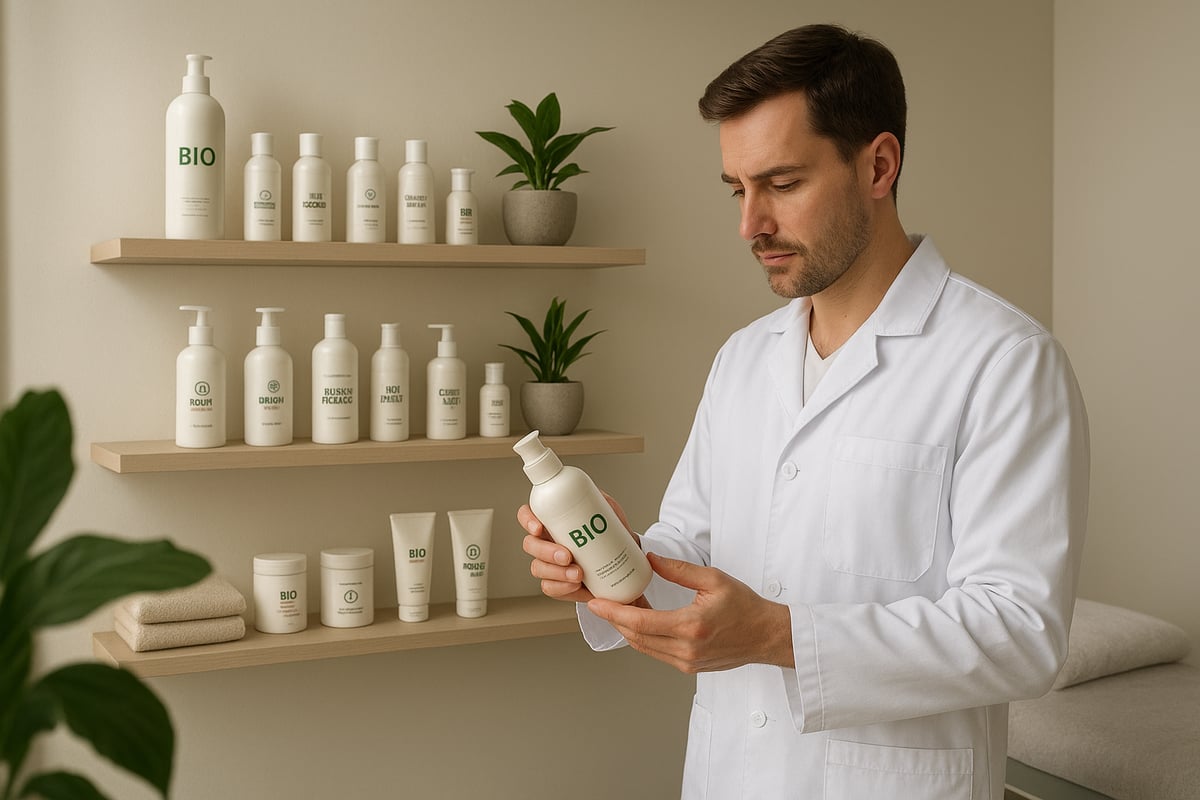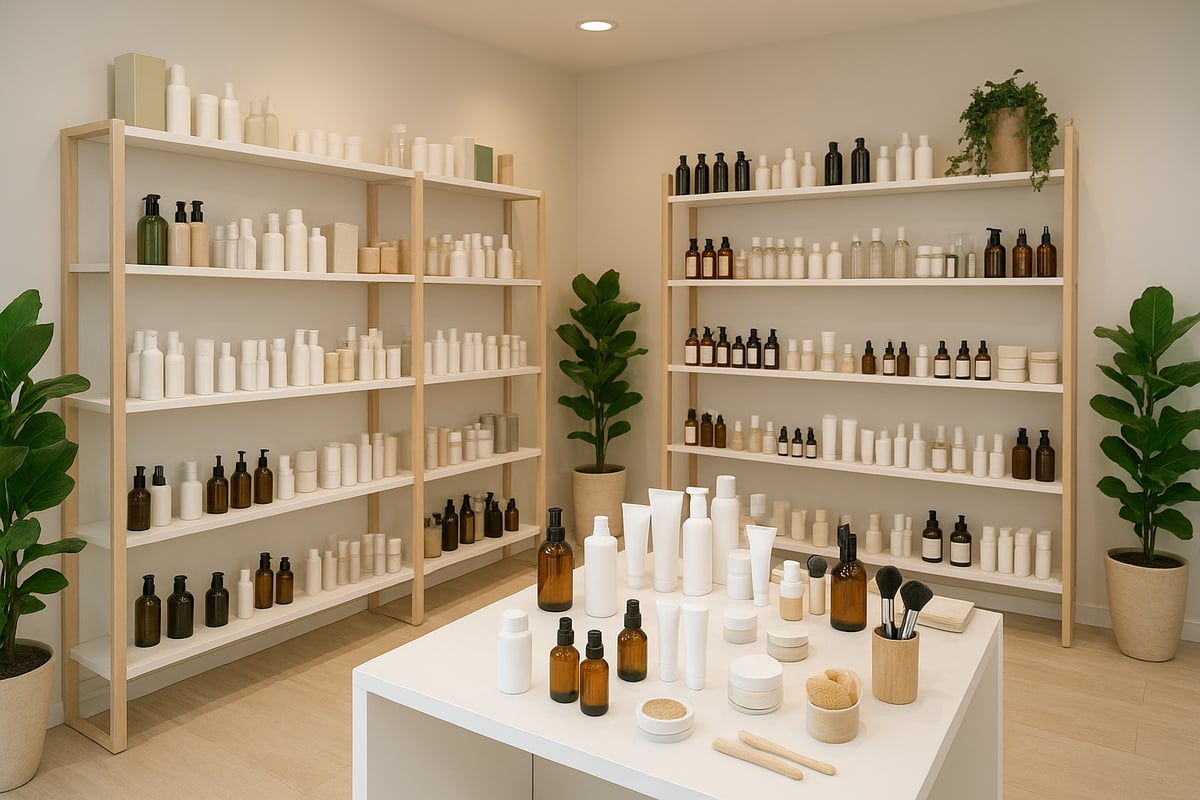Guide 2025: Beauty Product Supplier for Professionals

The professional beauty sector will experience a profound transformation in 2025, driven by innovation, rising quality requirements and the quest for reliable partners. Faced with the diversity of the offer, choosing the right beauty product supplier becomes a strategic issue for each institute, spa or salon wishing to stand out.
Professionals are now looking for solutions that are efficient, safe and eco-responsible. Finding a beauty product supplier suited to your needs can make the difference in retaining your customers and optimizing your offer.
This 2025 guide supports you step by step in selecting the ideal supplier. Discover the major trends in the sector, the different types of partners, the essential criteria for an informed choice, as well as practical advice for successful professional sourcing.
Prepare to transform your purchasing strategy and move your establishment towards excellence.
Overview of the professional beauty products market in 2025
The market for professional beauty products in France and Europe shows sustained growth in 2025. It benefits from a craze for natural care, organic cosmetics and the digitalization of purchases. According to Growth of the beauty market in 2025, the demand for a beauty product supplier oriented towards innovation and quality continues to increase, supporting the progression of the sector.
Professional expectations are changing rapidly. Proven effectiveness, health safety, traceability of ingredients and naturalness are now essential. Organic, cruelty free or made in France labels play a key role in the selection of the beauty product supplier. Eco-responsibility and transparency are becoming strategic criteria for demanding institutes and spas.
Innovation is expressed through cutting-edge formulas, eco-designed packaging and differentiating sensory experiences. The choice of beauty product supplier becomes central to building customer loyalty and standing out. More than 30% of institutes today favor local or eco-responsible suppliers. The success of French organic brands and the rise of sensory rituals in institutes illustrate this transformation of the market.

The different types of professional beauty product suppliers
Choosing the right beauty product supplier directly influences the quality of the offer offered in institutes, spas or salons. Understanding the specificities of each type of supplier is essential to optimize your professional purchases.

Comparison table of supplier types
| Supplier type | Advantages | Disadvantages |
|---|---|---|
| Direct manufacturer | Quality, innovation, traceability | High MOQ, lead times, exclusivity |
| Specialized wholesaler | Wide choice, flexibility, management | Less customization |
| B2B marketplace | Multi-brands, centralization, simplicity | Risk of heterogeneity |
| Exclusive distributor/franchisor | Support, stable contracts | Constraints, dependence |
| International supplier | Attractive prices, new products | Logistics, standards, deadlines |
| Local supplier | Proximity, responsiveness, eco-responsibility | Sometimes limited range |
| Dropshipping | Speed, no stock to manage | Limited quality control |
Direct manufacturers offer optimal control over quality and innovation, often with tailor-made products and specific certifications. For example, choosing a organic cosmetic supplier for professionals allows you to combine the requirement of naturalness and dedicated support for institutes.
Specialized wholesalers are distinguished by a large catalog and attractive commercial conditions, ideal for quickly diversifying the beauty product offering.
B2B marketplaces centralize thousands of references, simplifying administration and order management. They provide access to new brands while optimizing sourcing.
Exclusive distributors and franchisors offer reserved ranges, marketing support and assistance, but their model sometimes imposes more rigid commitments.
The choice between international and local supplier depends on the establishment’s strategy. Local suppliers impress with their responsiveness, their respect for French standards and their eco-responsible commitment, while international suppliers offer competitive prices but make logistics more complex.
Dropshipping appeals with its simplified inventory management and the speed of implementation, but quality control remains a challenge to monitor.
Finally, comparing a French organic manufacturer to an international marketplace clearly illustrates the issues: personalization, proximity and quality on the one hand, diversity and prices on the other. Choosing your beauty product supplier carefully means adapting your strategy to your specific needs.
Essential criteria for choosing your professional supplier in 2025
The selection of an efficient beauty product supplier is based above all on the quality and safety of the products. Favor recognized certifications, strict compliance with European standards and traceability of ingredients.
To guarantee the diversity of your offer, evaluate the width and depth of the range: face care, body care, makeup, accessories, and exclusives. Commercial conditions are also crucial: analyze minimum order quantities, professional rates, as well as delivery times and terms.
Responsive customer service makes the difference. Look for support, provision of samples, training and suitable marketing tools. CSR commitments, such as the use of sustainable packaging or local sourcing, have become essential for a credible beauty product supplier.
Finally, the reputation of the partner counts: consult reviews, labels and testimonials. To test the reliability of a supplier, it is recommended to start with a discovery kit for institutes, allowing quality and customer feedback to be assessed before a long-term commitment.

Focus on leading suppliers and innovative solutions
The beauty product supplier landscape is evolving rapidly, driven by innovation and diversification of offers. Professionals are looking for reliable partners, capable of meeting growing demands in terms of quality, traceability and service. Let's discover together the major players and the solutions that are shaping the market in 2025.
The main B2B suppliers and platforms in 2025
The professional beauty product supplier market is dominated by various players, each with their own strengths. We find Beauty Joint, Blanka, Born Pretty and Beauty Big Bang, specializing in the diversity of the offer and product innovation. ISO Beauty, FragranceNet.com and Dermacol Cosmetics stand out for their technical ranges and personalized support.
Platforms like BeautéTrade or NicheDropshipping allow simplified management and great flexibility. According to Minea, 65% of institutes collaborate with at least two suppliers to diversify their offering and meet all expectations.
Digital platforms and solutions to centralize your purchases
Digitalization is transforming sourcing from a beauty product supplier. Marketplaces such as Ankorstore provide access to multiple brands, centralize orders and automate inventory management. Innovative features include personalized catalogs or recommendations based on artificial intelligence.
These solutions facilitate the tracking of purchases and optimize logistics, offering professionals valuable time savings and better visibility of their supply.
Green Spa: the organic and sensory requirement for professionals
Green Spa has established itself as an essential beauty product supplier for institutes and spas looking for organic and sensory cosmetics. The brand offers high-end massage oils, sensory rituals and products made in France, all committed to an eco-responsible approach.

Professionals benefit from impeccable quality and tailor-made support. To explore their entire offering, it is possible to discover the Green Spa range, recognized by many high-end establishments in France and Europe.
Steps to select and collaborate effectively with your supplier
Choosing a beauty product supplier suited to your professional needs requires a structured approach. Follow these five key steps to ensure the success of your partnership and optimize the quality of your offer.
1. Define your needs and your concept
Start by analyzing the positioning of your establishment. Specify whether you want to offer organic, luxury or a unique sensory experience. Also identify the range of products, accessories and services expected by your customers. This step determines the choice of beauty product supplier and guides the final selection.
2. Identify and pre-select suppliers
Search for suppliers through trade shows, specialized directories or B2B platforms. Check certifications, regulatory compliance and suitability for your concept. Select several options to maintain flexibility in your sourcing.
3. Test and compare offers
Request samples and test products in real conditions to assess their effectiveness. Analyze customer feedback and compare commercial conditions. Explore specialized collections like Professional massage oil collection can help you appreciate the variety and quality of the offers offered by each supplier.
4. Negotiate and contract
Start negotiations on prices, payment terms and possible exclusivities. Formalize commitments through a clear contract in order to secure the relationship and anticipate future developments in the partnership.
5. Monitor and optimize collaboration
Set up satisfaction indicators and regularly monitor the quality of the products delivered. Adapt the offer according to seasonal needs and anticipate market developments. Rigorous monitoring with your beauty product supplier guarantees customer loyalty and the sustainability of your business.
Practical advice for optimizing your professional beauty sourcing in 2025
Optimizing your sourcing from a beauty product supplier is essential to guarantee the competitiveness of your establishment in 2025. Customer expectations are evolving quickly, so it becomes strategic to adapt your selection and your purchasing processes.
To anticipate trends, focus on organic, clean beauty, personalization, and sensory experience. Do not hesitate to diversify your suppliers in order to limit the risk of shortages and expand your range. This approach also allows you to better respond to the specific demands of your professional customers.
Stay informed about new products and innovations by participating in trade fairs, webinars and consulting the specialized press. To better understand the evolution of the sector and adapt your sourcing, explore resources on cosmetics market size and growth.
Set up an effective inventory and order management system to avoid stock shortages and optimize your cash flow. Choose suppliers offering professional support, including training and appropriate marketing tools.
Systematically check compliance, transparency on ingredients, origin and the presence of labels. Negotiate payment terms to optimize your cash flow, a common practice among demanding professionals.
Finally, remember that the quality of service from your beauty product supplier directly impacts your customer loyalty. According to an Ankorstore study, 70% of professionals confirm this essential link.
After reading this guide, you understand how choosing a professional beauty supplier can transform your customers' experience and strengthen your establishment's reputation. Together we have seen the major trends, the key selection criteria and the importance of a committed partner like Green Spa for your success in 2025. You want to go further, ask your questions or refine your professional supply approach We are here to support you and provide you with tailor-made solutions.
To find out more



